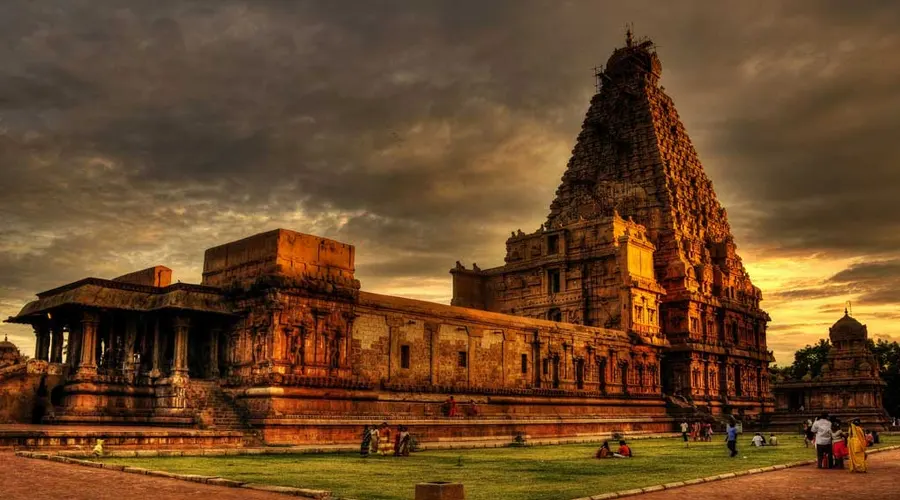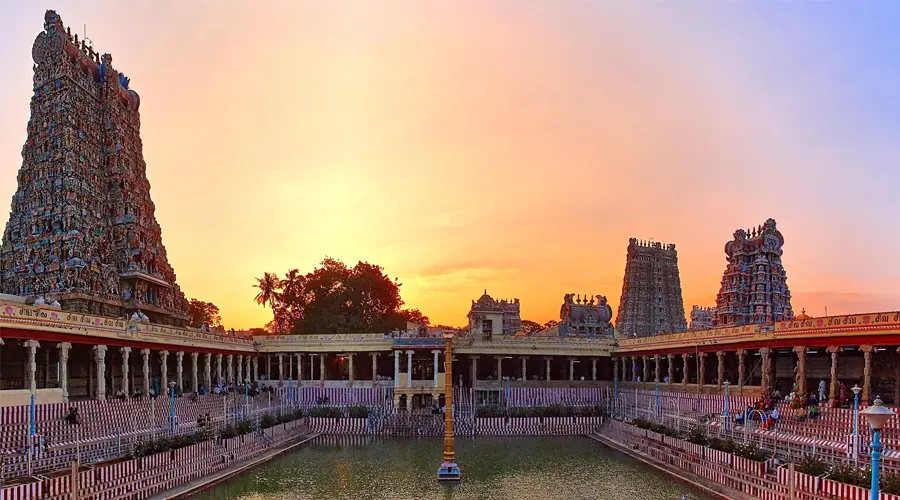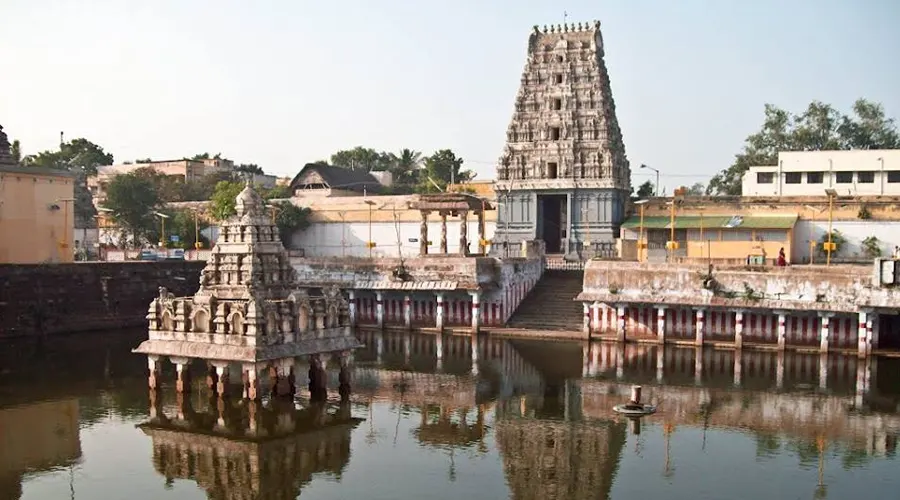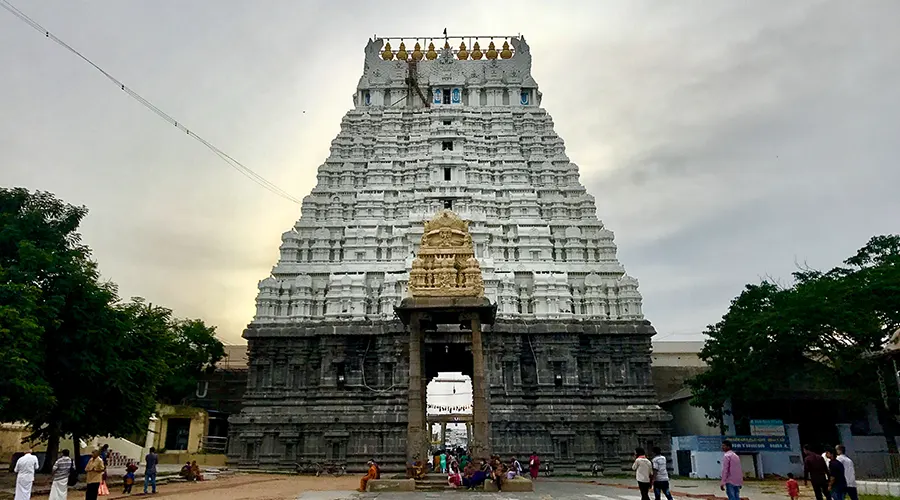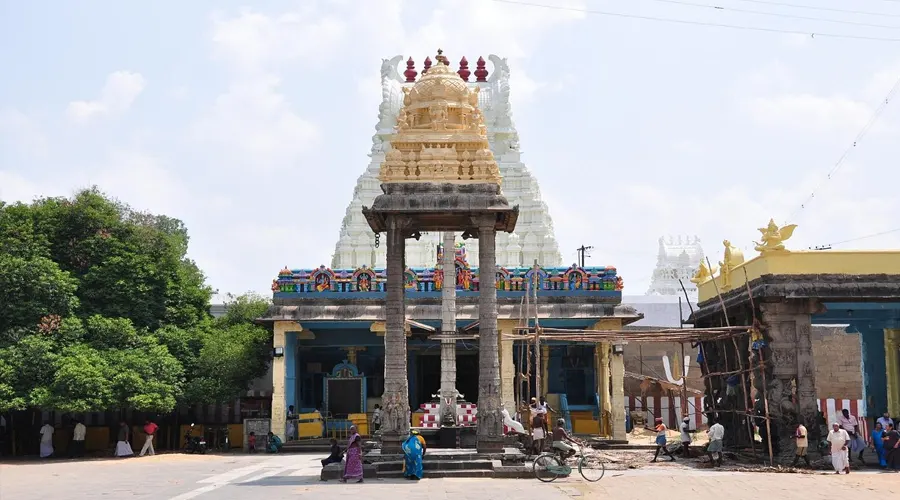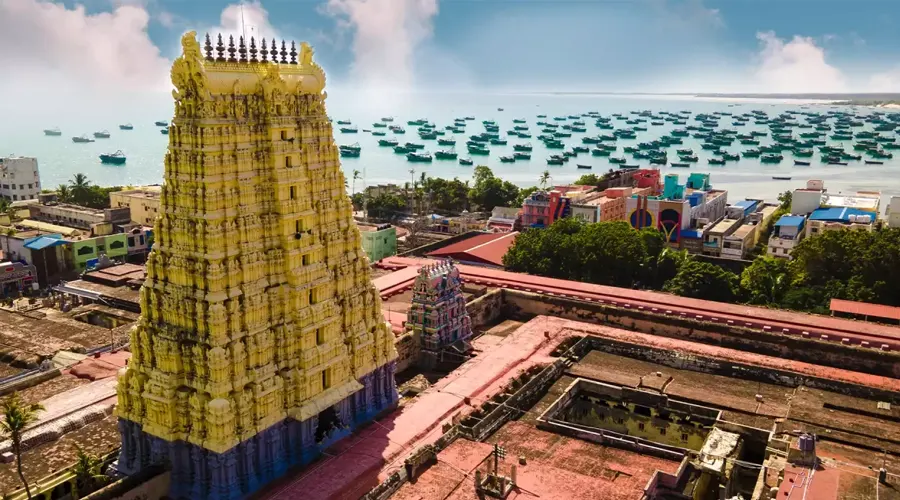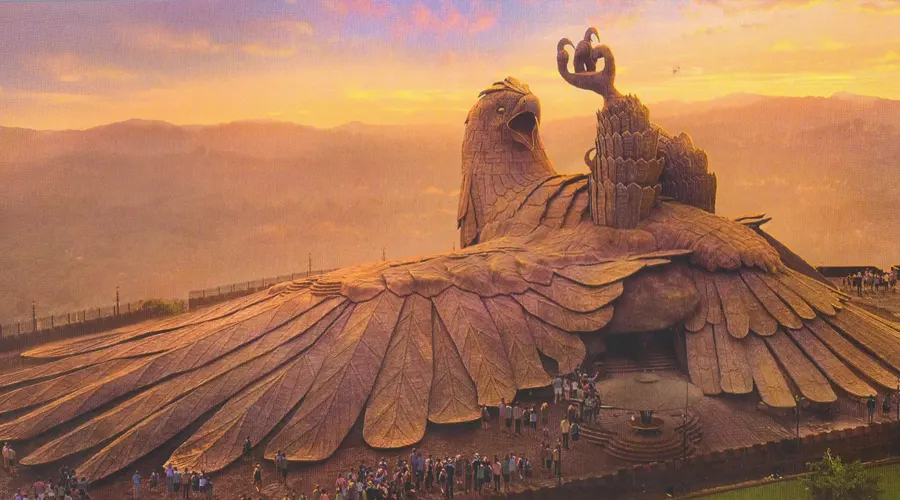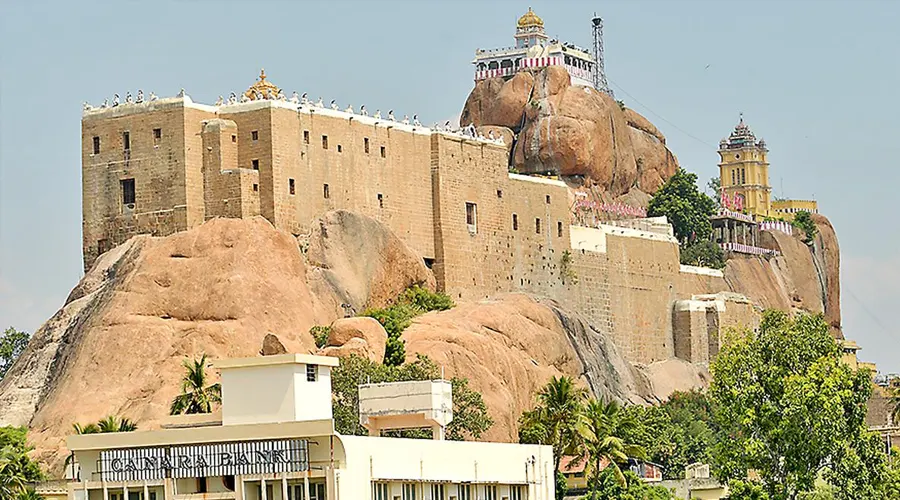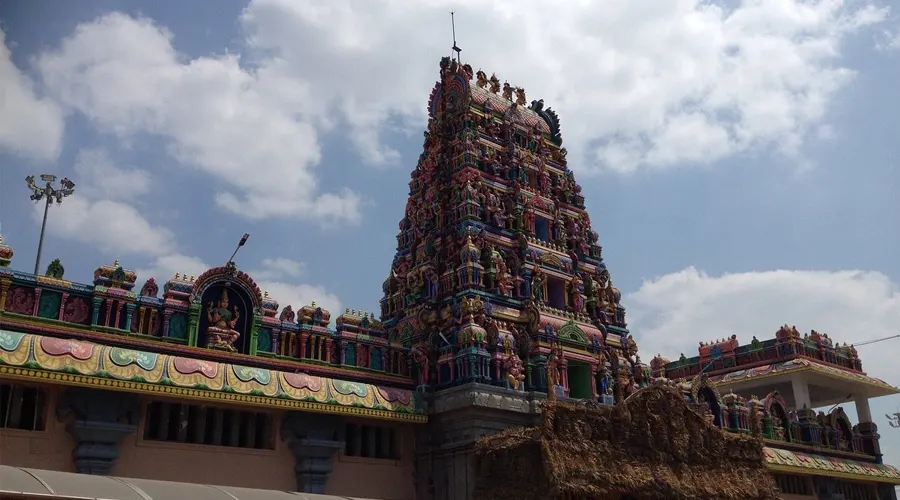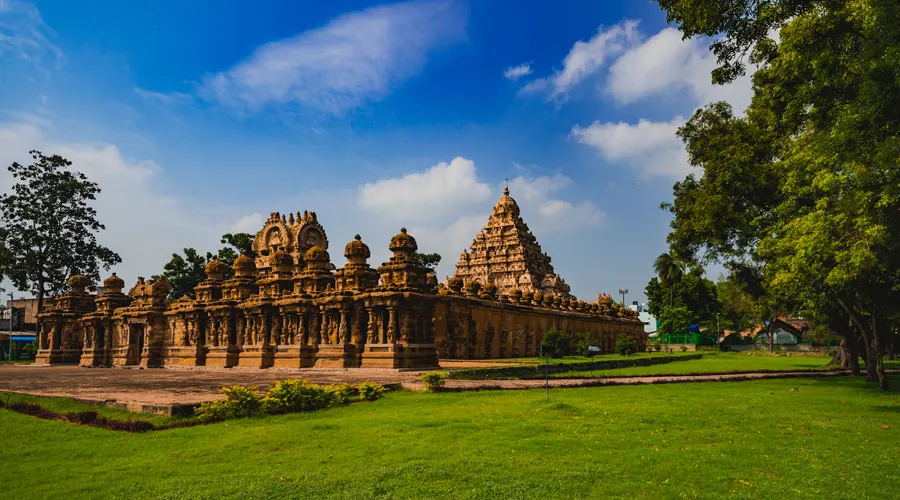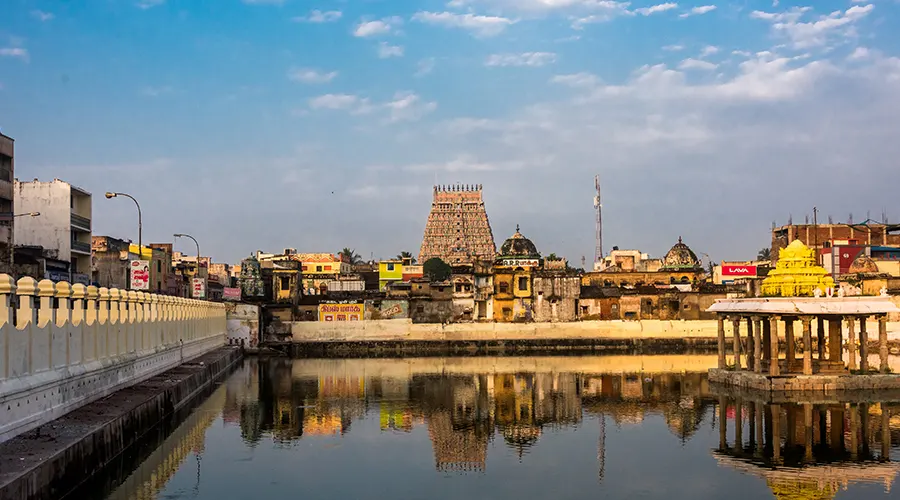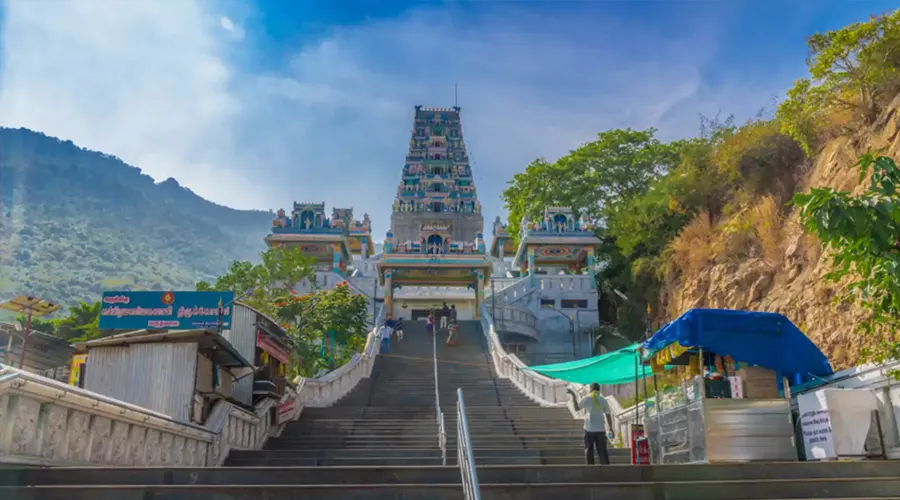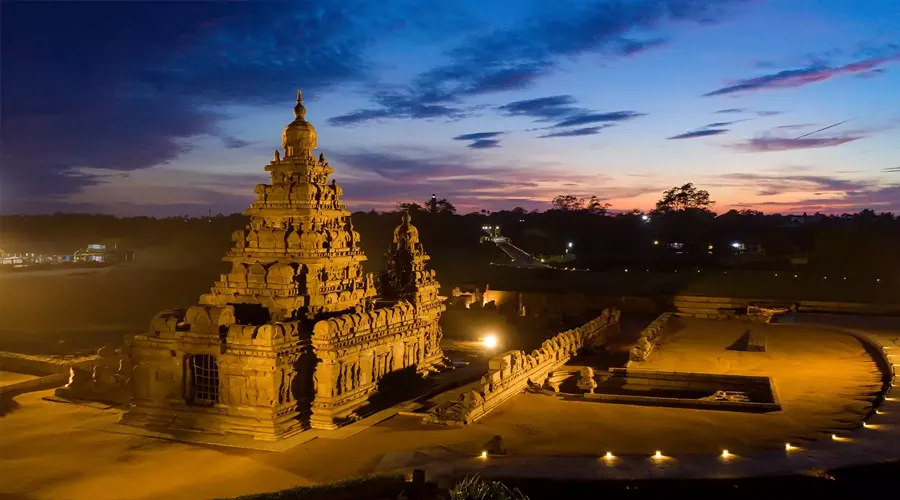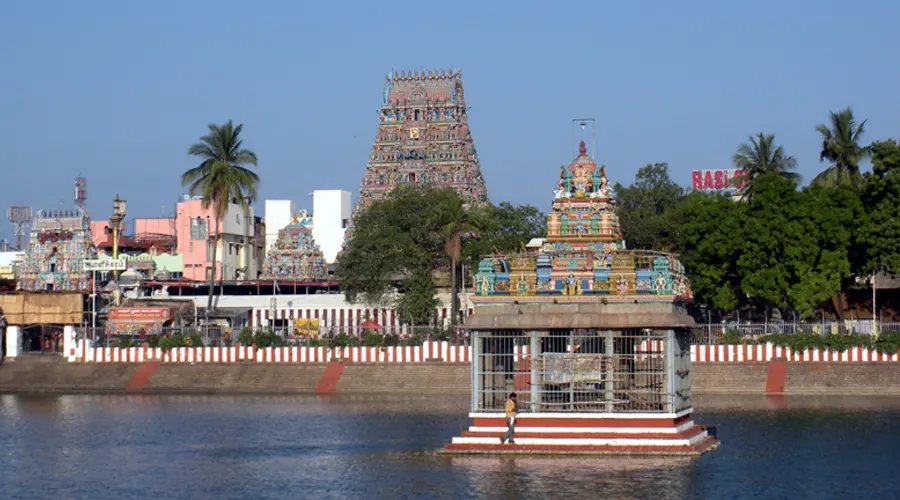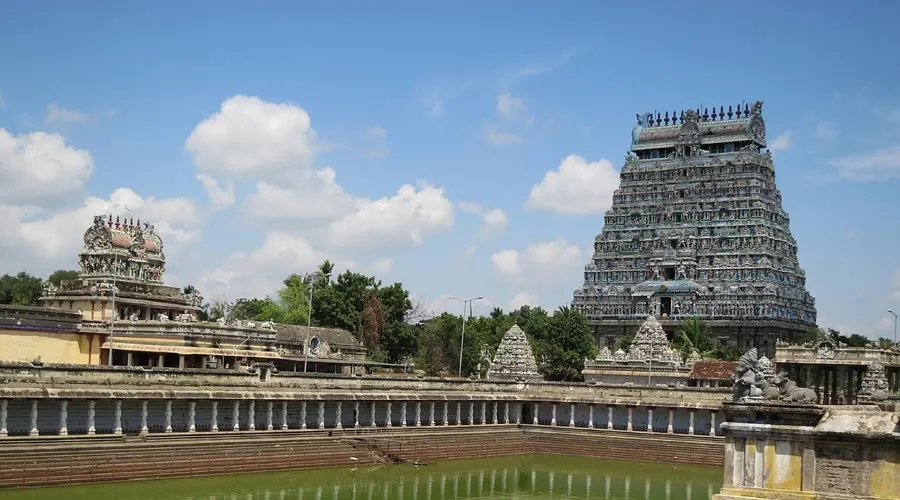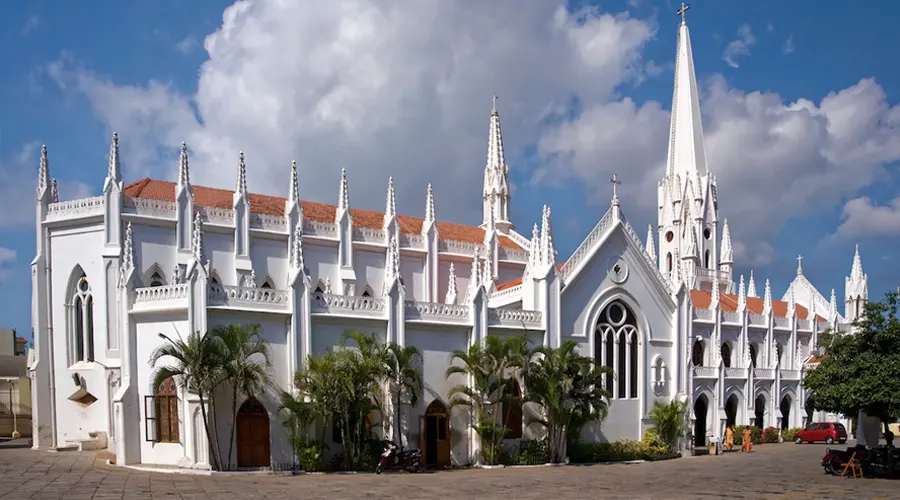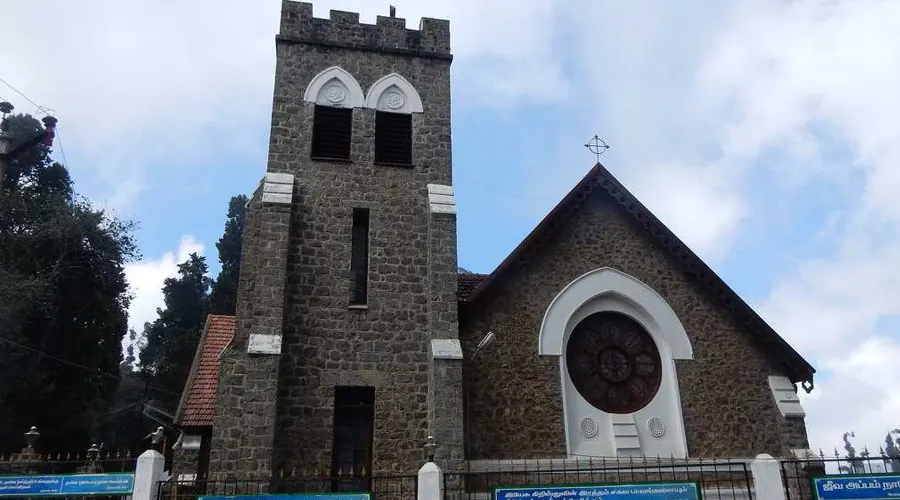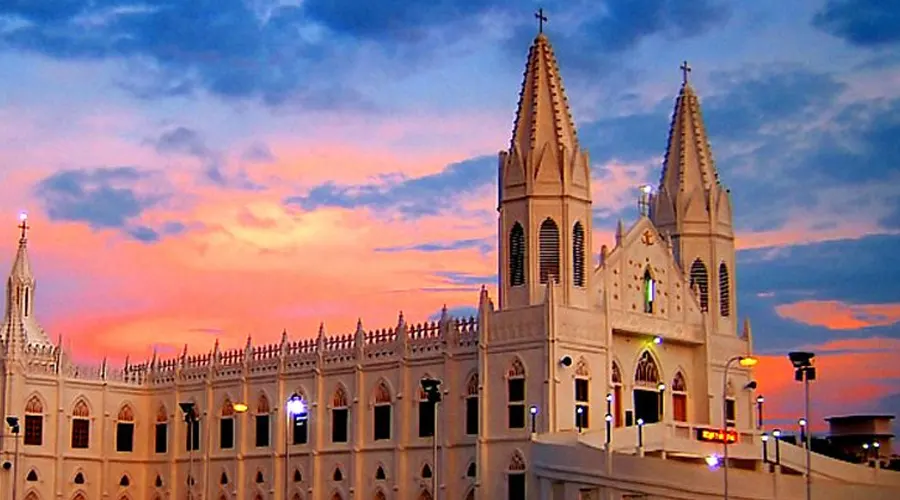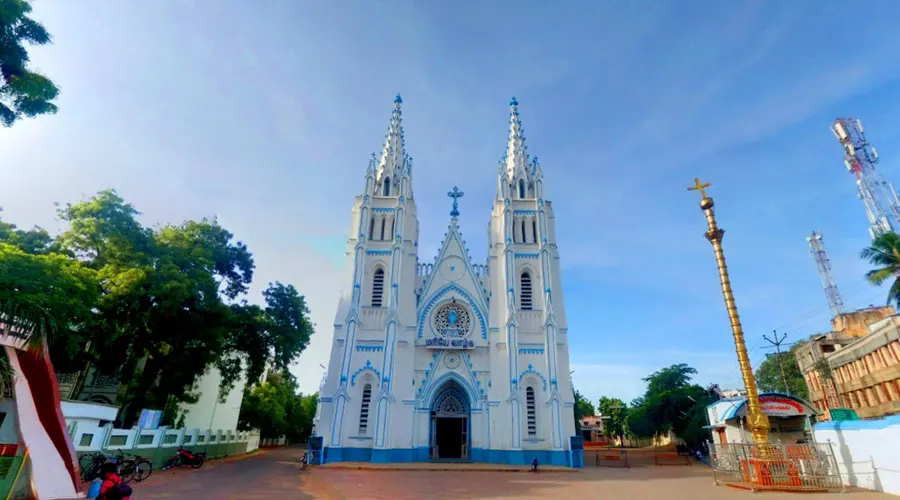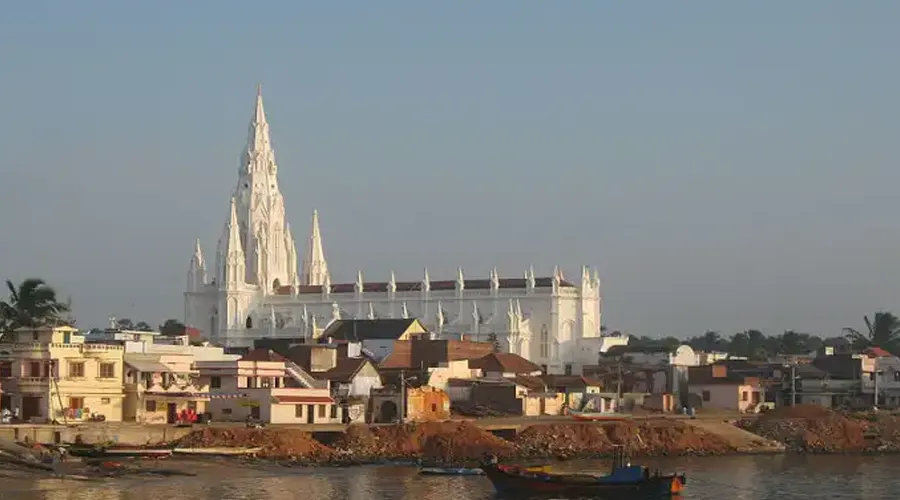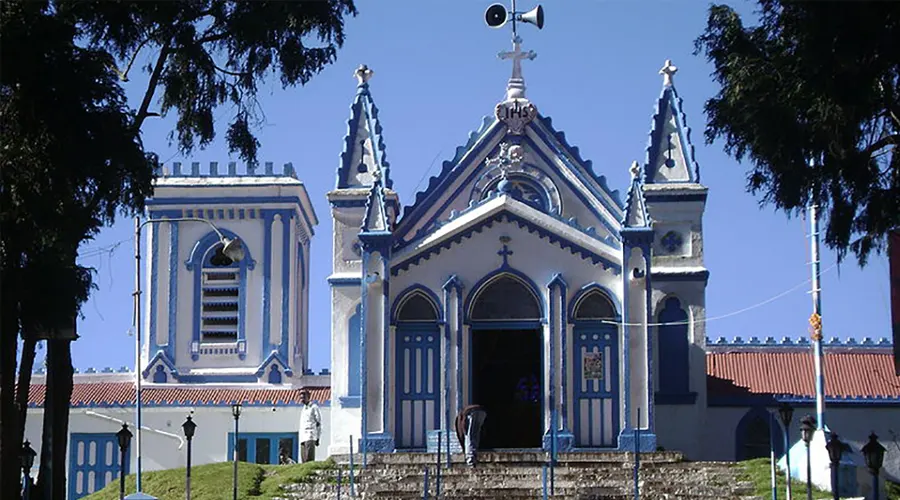Brihadeeshwara Temple
Located in Thanjavur city of the Tamil Nadu state, Peruvudaiyar Kovil is one of the most popular temples in South India. Popularly known as Brihadeeswarar Temple, Rajarajeswaram, and RajaRajeshwara Temple, this popular Hindu temple is dedicated to Lord Shiva. Erected by Raja Raja Chola I, this temple is a wonderful example of Tamil architecture. One of the largest and greatest architectures in Indian history, it is also a UNESCO World Heritage Site as ‘Great Living Chola Temples.
Another single rock carving is the Nandi bull statue at the temple’s entrance. This sacred bull temple is 13 feet high and 6 feet long. The temple structure is made from granite. Commissioned by Raja Raja Chola I in 1010 AD, this temple is fondly called the ‘Big Temple’ and turned 1000 years old in the year 2010.
Placed on the banks of a river that is the source of a manmade canal, making a channel around the temple complex outside the walls, makes it look like a fortress. Along with the main temple in the complex, there are other structures too. One entrance to the complex is through a 5-storied gopuram and the second entry straight to the quadrangle is from one smaller gopuram.
A colossal Shikhara, dominating the main quadrangle, is hollow from the inside has 16 stories, and is around 60 m high. Every surface of the shikhara is carefully covered with piers, attached columns, and pilasters. The main entry gopuram is 30 m high and is smaller than Vimana as happens in the Dravidian style of architecture.
History of Brihadeeshwara Temple
The Big Temple of Tanjavore is a stunning monument that speaks oodles about the architectural mastery of the Chola era. This 212 ft (64.8 meters) towering Shiva temple is home to one of the largest Shiva Lingas in the country. A majestic Nandhi (bull), measuring a gigantic 19.4 ‘ x 8.23’ x 12’ (5.94 x 2.51 x 3.66 in meters) stands guard over the temple. This is the second-largest Nandhi in India and is carved out of a single stone. Everything about this temple is big and majestic. No wonder it is referred to as The Big Temple.
The Big Temple was constructed by Raja Raja Chola I, the greatest king of the Chola dynasty between AD 985 and 1014. The Chola dynasty was Shaivites. Vijayalaya Chola who envisioned "The Chola Empire" ruled around AD 850. Raja Raja Chola I was the greatest warrior and administrator in the Chola dynasty. King Raja Raja Cholan was the most successful in expanding their empire. The Big Temple was an expression of the success of Raja Raja Chola's empire. This temple is also called Brahadeeswara Temple or Peruvudaiyar Kovil or Rajarajeswaram. The temple is part of the UNESCO World Heritage site known as the "Great Living Chola Temples”.
King Raja Raja Cholan had the main temple built completely with granite. It is hard to imagine how, at that age, more than 130,000 tones of granite were brought to the temple site, especially given that there is no granite quarry within a hundred kilometers of the temple site. Another stunning architectural feat is the Vimana / Shikhara - the spire atop the temple. The beautiful lotus-shaped stone of the Big Temple weighs a stunning 80 tons. We can but marvel at the engineering mastermind who managed to hoist an 80-ton carved rock up a 212 feet tower back in the 11th century.
Architecture of Brihadeeshwara Temple
The chief architect of the temple was Kunjara Mallan Raja Raja Perunthachan. The layout of the temple is based on the principles of Vastu Shastra, the ancient Hindu science of architecture and construction, and Agamas, the ancient scripts that define the principles behind temple construction. The central temple site is surrounded by a rectangular boundary of 885 ‘ x 450 ‘ (270 m by 140 m). The temple boundary holds many sub-shrines besides the main temple and the Nandi.
The niches on three sides of the temple hold images of Shiva, Vishnu, and Durga. The southern wall has sculptures of Ganesha, Vishnu with his consorts Sridevi and Bhudevi, Lakshmi, a pair of Dvarapalas, Vishnu Anugraha murti, Bhikshatana, Virabhadra, Dakshinamurti, Kalanta, and Nataraja. On the west side, there are images of Harihara, Ardhanarishvara, a pair of Dvarapalas, and two Chandrasekharas, one with and the other without the halo.
On the north, in the lower series, the depiction of Adhanarisvara, Gangadhara, a pair of Dvarapalas, Virabhadra (with a sword and a shield), Alingana Chandrasekhara, Siva holding a Sula (spear), a pair of Dvarapalas, Sarasvati, Mahishasuramardini and Bhairava. The north series shows several Tripurantakas repeated in each niche. In the small circular space of the top niches are present the carvings of Ganesha, Vrishabavahana, Bhikshatana, Narasimha, and Varaha.
Besides these, each wall of the temple and the surrounding architecture are filled to the brim with carvings and paintings depicting the rich history of art, culture, mythology, and science of the era.

